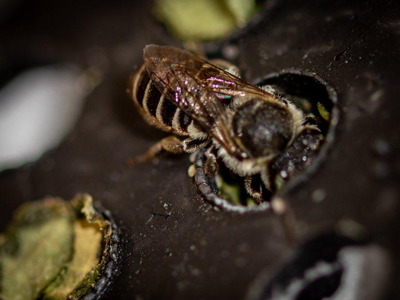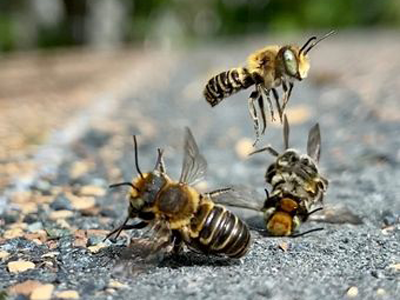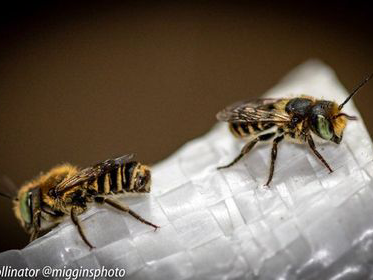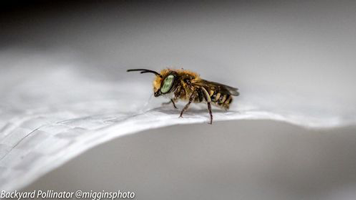
Photo by Mark Higgins
This is a male bee, note the green eyes
Let us introduce you to this amazing insect, one of the most efficient pollinators on our planet. Read some quick facts, explore the life cycle of the leafcutter bee and discover how the bees in your Backyard Pollinator work to pollinate your local surroundings.
- You need not fear the friendly leafcutter bee.
- Leafcutter bees are not aggressive and do not defend their nesting area.
- Leafcutter bees may sting if trapped against your body. Their sting is considered half as painful as a honeybee’s. However, commercial producers wear no protective clothing or equipment, even when working around millions of leafcutter bees in their fields.
- Leafcutter bees are small in size (7-18mm long) and are dark gray in color. Females have white bands across their abdomen and long hairs on their underside for carrying pollen. Males have green eyes and two dots at the rear of their abdomen.
- Leafcutter bees are solitary which means they do not build colonies or store honey. They build cells packed with a pollen/nectar paste as a food source for their larvae.
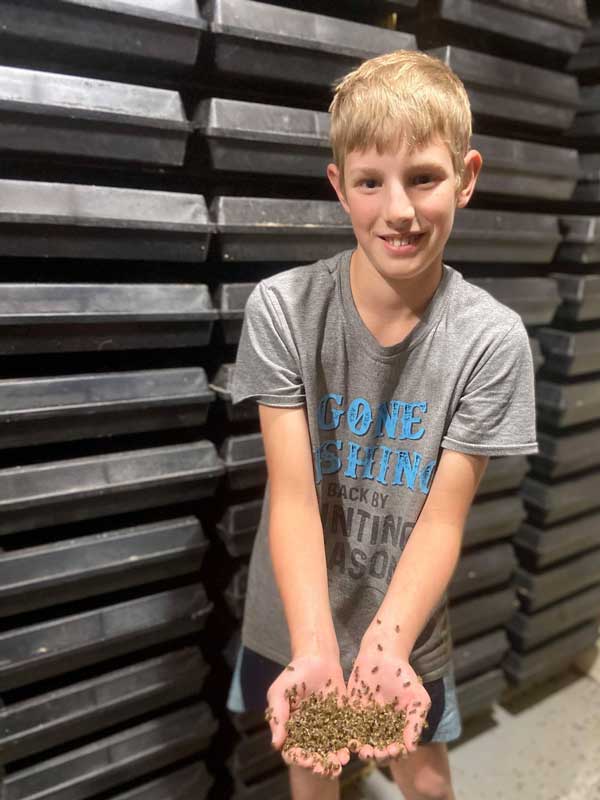
A handful of friendly leafcutter bees
The inspiration for backyardpollinator. This block was placed at our friend’s house near a commercial alfalfa field to collect stray bees. It was a hot day and the bees were thriving. From this the idea for the Backyard Pollinator was born.
Friendly Bees: Mark scoops up a handful of bees and watches them fly away.

